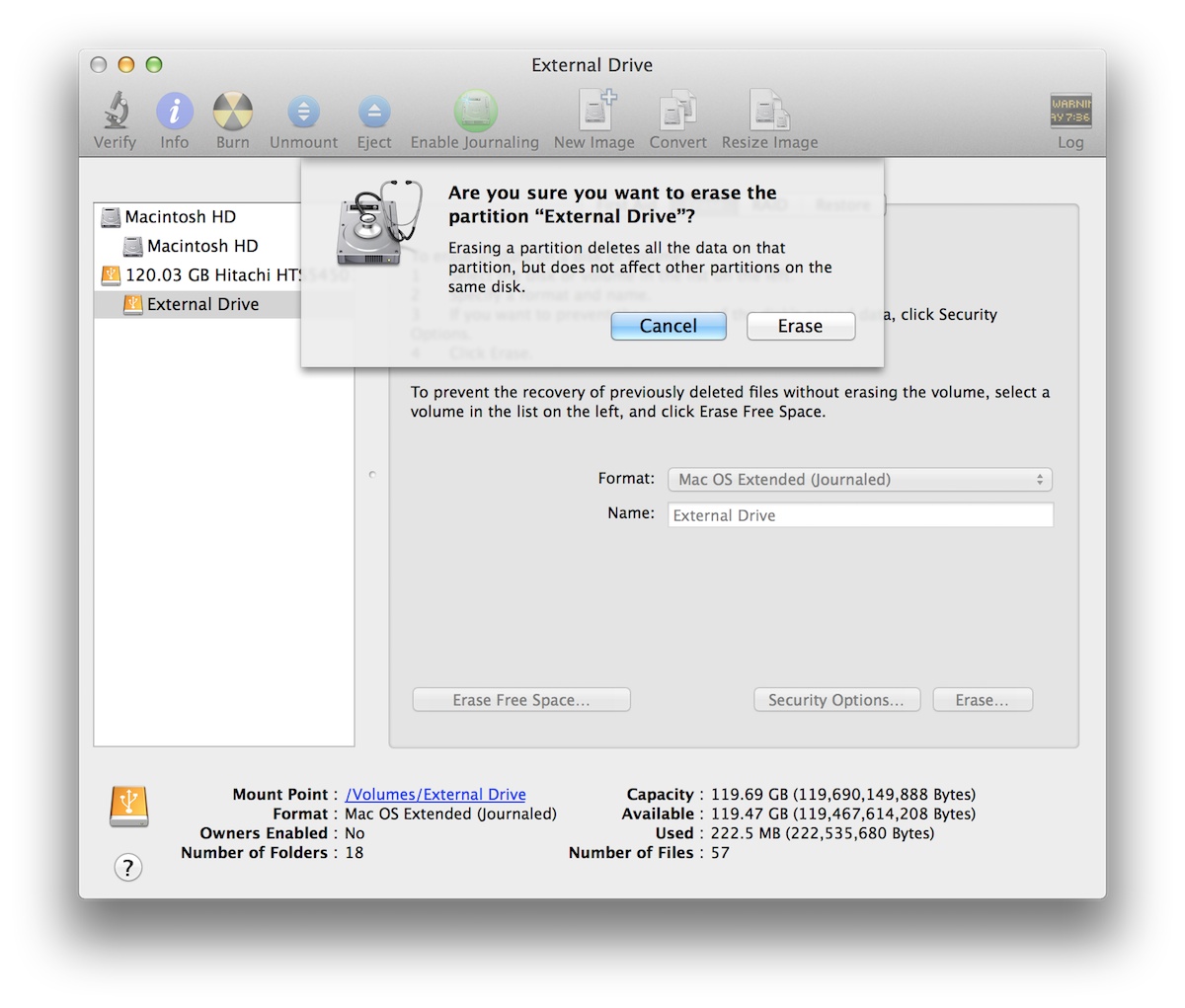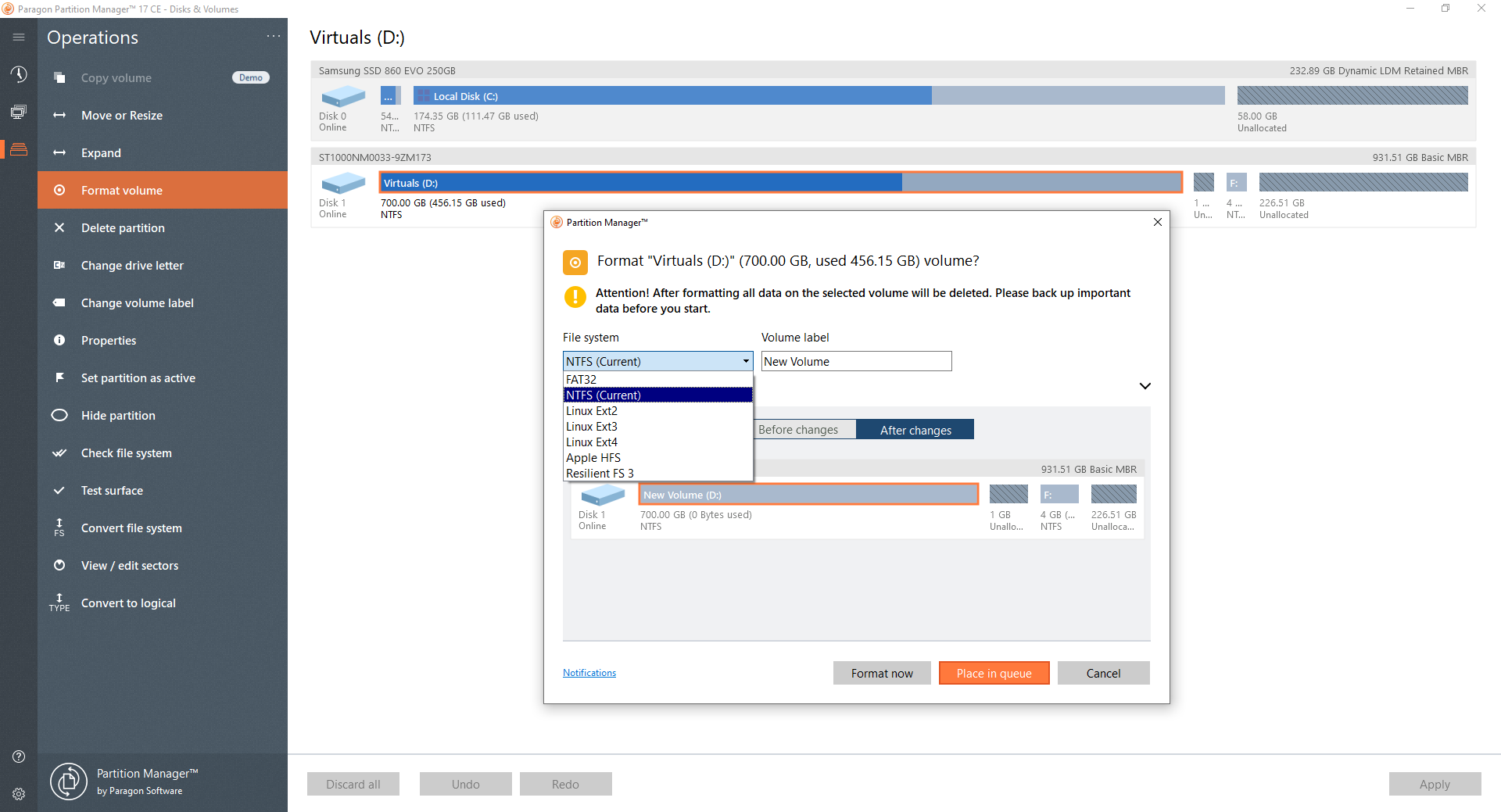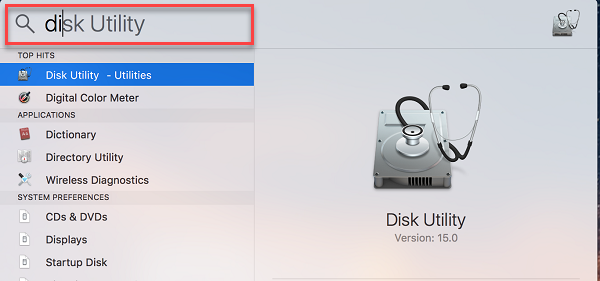When there are several partitions on your hard drive, and you need one bigger than the other on a particular drive to handle more data in it, you need to know methods to use to resize partitions on Mac. In this article, we'll talk about rules of resizing partition for Mac and how to backup data before resizing partition. Most importantly, you'll learn how to resize partition on Mac with Disk Utility.
1. Backup Important Data Before Resizing Partition on Mac
2. Resize Partition on Mac with Disk Utility
Resize Partition on Mac with Disk Utility. Mac Disk Utility is a powerful built-in application in Mac OS that has undergone a series of changes with every major OS update. Many Mac users have complained that using Mac Disk Utility to resize a Mac Volume is no longer easy. However, being an experienced Mac expert, we feel its interface is user. How to partition your Mac using Disk Utility. For other uses, Disk Utility is free and will do the job. There are also some paid-for alternatives with advanced features, see Best disk partition. With other applications or Disk Utility, you can be able to view the hidden partition, however, cannot select or mount it. Can I resize Windows partition on Mac hard disk drive? Yes, you can now resize Boot Camp partition and Macintosh hard drive with the latest version of Stellar Partition Manager software i.e.
1Rules of Resizing Partition for Mac
If you want to resize a partition for your Mac without erasing data, there are some rules you need to follow. Ensure you pay attention to these rules for maximum results.
Partition Magic
The last partition on a drive cannot be increased. However, it can be deleted.
When a particular partition is deleted, the space from it is added to the previous partition.
Fusion drives can be quickly resized with the version of Mac Utility Disk used for its creation but not with an older one.
Before you resize a Mac volume, remember to back up the drive because resizing may need you to delete partitions
Trying to use pie charts to resize a volume is quite difficult to achieve. It is better to use optional sizes rather than using pie chart dividers.
If you want to increase a particular volume, then the volume next to the affected volume must be deleted to free up more space.
2How to Resize Mac Partition without Losing Data?
To keep your data safe and intact, make sure that you've backed up your data before resizing partition. Here we recommend a backup and recovery service - AnyRecover Data Recovery for Mac, which is a unique software developed by iMyFone team to help Mac users recover data from their disk. With AnyRecover unique algorithm, you can backup your data from a partition on Mac easily.
Key FeaturesPowerful Partition Recovery: Back up files from partition on Mac and recover all your lost files no matter how they were lost, such as format, resize, accidentally delete, etc.
Recover All Kind of Files: AnyRecover is a great software you can use to recover any file type. Whether it is documents, photos or videos, AnyRecover is the right tool for the job
Safe and Reliable: AnyRecover can recover your files safely without overwriting your existing files.
Supports All Mac OS: AnyRecover supports all Mac OS including macOS Mojave, macOS Catalina, macOS high sierra, and more.
Backup Important Data Before Resizing Partition on Mac
Firstly, download and install the software for Mac, then launch the software on your Mac.
Step One - Select the Path of the File Location

Set the path of data location where you want to get your lost files. Click the 'Start' button to begin the process.
Step Two - Scan the Selected Path
The program will start an All-Round scan on your selected location, once the process is done, all your lost files will be listed out in respective file types.
Step Three - Preview and Recover Lost Files
Andreamosaic for macbook. Before you recover the files, you'll have to preview them to be sure that you've selected the right files. Then click the 'Recover' button.
Now you're ready, without need for worrying about data loss, continue reading to know how to resize partition on Mac by using the Disk Utility.
Resize Partition on Mac with Disk Utility
Mac Disk Utility is a powerful built-in application in Mac OS that has undergone a series of changes with every major OS update.
Many Mac users have complained that using Mac Disk Utility to resize a Mac Volume is no longer easy. However, being an experienced Mac expert, we feel its interface is user-friendly and easy to use. Apple has come up with a well-arranged Mac Disk Utility interface that will make enlarging/resizing of a Mac Volume to be easy.
Steps to Resize Mac Partition
Step 1. Navigate through your menu and open Mac Disk Utility.
Step 2. When Mac Disk Utility opens, select the drive you want to resize.
Step 3. Then select Partition on the toolbar to resize the Volume of your choice using the Utility tool. A pie chart will open showing free space and space occupied by each Volume.

Step 4. For a volume to be enlarged, another one has to be deleted. So, choose the Volume you want to delete on the pie chart.
Step 5. Delete the Volume of your choice and tap the minus icon below the pie chart. The pie chart will give you a warning message about what you've done.
Step 6. If you're satisfied, tap Apply or tap Cancel to delete another Volume.
Step 7. Automatically, Mac Disk Utility will add up the freed space to the Volume instead of the deleted one. However, if you want to customize the Volume sizes, you can select the Volume, specify its size then hit Revert/Return. You can create a new Volume in the leftover space.
Step 8. Drag the Pie Chart to adjust the size of each volume. When the Volume is adjusted to the size you desire, click Apply, and that's it.
However, there are times when disk utility can't resize partition. Don't worry, there are also solutions available. Refer to this page and you'll get it fixed.
Conclusion: Who would have thought that backing up important files from partition or enlarging Mac partition can be done effortlessly? Well, with AnyRecover for Mac, you can also recover all your lost files which are formatted with a 98% recovery success rate. So, when next you're having problems recovering a deleted file, simply go for AnyRecover.
Disk Utility User Guide
Disk Utility can fix certain disk problems—for example, multiple apps quit unexpectedly, a file is corrupted, an external device doesn't work properly, or your computer won't start up. Disk Utility can't detect or repair all problems that a disk may have.
If you run First Aid on a disk, Disk Utility checks the partition maps on the disk and performs some additional checks, and then checks each volume. If you run First Aid on a volume, Disk Utility verifies all the contents of that volume only.
In the Disk Utility app on your Mac, choose View > Show All Devices.
Note: If you're checking your startup disk or startup volume, restart your computer in macOS Recovery, select Disk Utility in the macOS Utilities window, then click Continue. If you check your startup volume (Macintosh HD), make sure you also check your data volume (Macintosh HD - Data).
In the sidebar, select a disk or volume, then click the First Aid button .
If Disk Utility tells you the disk is about to fail, back up your data and replace the disk—you can't repair it. Otherwise, continue to the next step.
Click Run, then click Continue.
If Disk Utility reports that the disk appears to be OK or has been repaired, you're done. You can click Show Details to see more information about the repairs. Otherwise, you may need to do one of the following.
If Disk Utility reports 'overlapped extent allocation' errors, two or more files occupy the same space on your disk, and at least one of them is likely to be corrupted. You need to check each file in the list of affected files. Most of the files in the list have aliases in a DamagedFiles folder at the top level of your disk.
If you can replace a file or re-create it, delete it.
If it contains information you need, open it and examine its data to make sure it hasn't been corrupted.
If Disk Utility can't repair your disk, or you receive a report that the First Aid process failed, try to repair the disk or partition again. If that doesn't work, back up as much of your data as possible, reformat the disk, reinstall macOS, then restore your backed-up data.
If your Mac has a Fusion Drive and you see a flashing question mark or alert, see the troubleshooting section of the Apple Support article About Fusion Drive, a storage option for some Mac computers.
Disk Partition Utility For Mac Mojave
If you continue to have problems with your disk or it can't be repaired, it may be physically damaged and need to be replaced. For information about servicing your Mac, see Find out how to service or repair your Mac.
Free Disk Partition Utility

Set the path of data location where you want to get your lost files. Click the 'Start' button to begin the process.
Step Two - Scan the Selected Path
The program will start an All-Round scan on your selected location, once the process is done, all your lost files will be listed out in respective file types.
Step Three - Preview and Recover Lost Files
Andreamosaic for macbook. Before you recover the files, you'll have to preview them to be sure that you've selected the right files. Then click the 'Recover' button.
Now you're ready, without need for worrying about data loss, continue reading to know how to resize partition on Mac by using the Disk Utility.
Resize Partition on Mac with Disk Utility
Mac Disk Utility is a powerful built-in application in Mac OS that has undergone a series of changes with every major OS update.
Many Mac users have complained that using Mac Disk Utility to resize a Mac Volume is no longer easy. However, being an experienced Mac expert, we feel its interface is user-friendly and easy to use. Apple has come up with a well-arranged Mac Disk Utility interface that will make enlarging/resizing of a Mac Volume to be easy.
Steps to Resize Mac Partition
Step 1. Navigate through your menu and open Mac Disk Utility.
Step 2. When Mac Disk Utility opens, select the drive you want to resize.
Step 3. Then select Partition on the toolbar to resize the Volume of your choice using the Utility tool. A pie chart will open showing free space and space occupied by each Volume.
Step 4. For a volume to be enlarged, another one has to be deleted. So, choose the Volume you want to delete on the pie chart.
Step 5. Delete the Volume of your choice and tap the minus icon below the pie chart. The pie chart will give you a warning message about what you've done.
Step 6. If you're satisfied, tap Apply or tap Cancel to delete another Volume.
Step 7. Automatically, Mac Disk Utility will add up the freed space to the Volume instead of the deleted one. However, if you want to customize the Volume sizes, you can select the Volume, specify its size then hit Revert/Return. You can create a new Volume in the leftover space.
Step 8. Drag the Pie Chart to adjust the size of each volume. When the Volume is adjusted to the size you desire, click Apply, and that's it.
However, there are times when disk utility can't resize partition. Don't worry, there are also solutions available. Refer to this page and you'll get it fixed.
Conclusion: Who would have thought that backing up important files from partition or enlarging Mac partition can be done effortlessly? Well, with AnyRecover for Mac, you can also recover all your lost files which are formatted with a 98% recovery success rate. So, when next you're having problems recovering a deleted file, simply go for AnyRecover.
Disk Utility User Guide
Disk Utility can fix certain disk problems—for example, multiple apps quit unexpectedly, a file is corrupted, an external device doesn't work properly, or your computer won't start up. Disk Utility can't detect or repair all problems that a disk may have.
If you run First Aid on a disk, Disk Utility checks the partition maps on the disk and performs some additional checks, and then checks each volume. If you run First Aid on a volume, Disk Utility verifies all the contents of that volume only.
In the Disk Utility app on your Mac, choose View > Show All Devices.
Note: If you're checking your startup disk or startup volume, restart your computer in macOS Recovery, select Disk Utility in the macOS Utilities window, then click Continue. If you check your startup volume (Macintosh HD), make sure you also check your data volume (Macintosh HD - Data).
In the sidebar, select a disk or volume, then click the First Aid button .
If Disk Utility tells you the disk is about to fail, back up your data and replace the disk—you can't repair it. Otherwise, continue to the next step.
Click Run, then click Continue.
If Disk Utility reports that the disk appears to be OK or has been repaired, you're done. You can click Show Details to see more information about the repairs. Otherwise, you may need to do one of the following.
If Disk Utility reports 'overlapped extent allocation' errors, two or more files occupy the same space on your disk, and at least one of them is likely to be corrupted. You need to check each file in the list of affected files. Most of the files in the list have aliases in a DamagedFiles folder at the top level of your disk.
If you can replace a file or re-create it, delete it.
If it contains information you need, open it and examine its data to make sure it hasn't been corrupted.
If Disk Utility can't repair your disk, or you receive a report that the First Aid process failed, try to repair the disk or partition again. If that doesn't work, back up as much of your data as possible, reformat the disk, reinstall macOS, then restore your backed-up data.
If your Mac has a Fusion Drive and you see a flashing question mark or alert, see the troubleshooting section of the Apple Support article About Fusion Drive, a storage option for some Mac computers.
Disk Partition Utility For Mac Mojave
If you continue to have problems with your disk or it can't be repaired, it may be physically damaged and need to be replaced. For information about servicing your Mac, see Find out how to service or repair your Mac.
